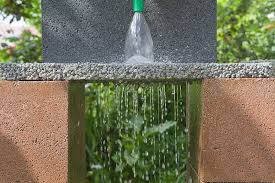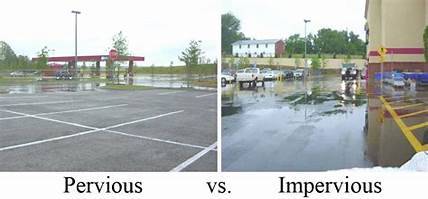Student | Posted on
Penetrable surfaces (otherwise called permeable or pervious surfaces) permit water to permeate into the dirt to sift through toxins and re-energize the water table. Impermeable/impenetrable surfaces are strong surfaces that don't permit water to enter, constraining it to run off.

What is the effect of impermeable surfaces on the climate?
Metropolitan and rural destinations ordinarily contain enormous regions of impermeable surface, causing a large group of issues:
Contamination of surface water. When stormwater runs off impermeable surfaces, it gets poisons as it streams into storm channels. The polluted water then, at that point, streams straightforwardly into waterways, lakes, wetlands and seas, producing issues for biodiversity just as general wellbeing.
Flooding of surface water and disintegration of stream banks. During times of weighty precipitation, a lot of impermeable surfaces create a lot of overflow. This unexpected inundation of spillover into waterways can cause streak flooding and disintegration of stream banks.
Water table isn't sufficiently re-energized. Since impermeable surfaces send water into storm depletes instead of permitting it to permeate down to our springs, groundwater might be utilized quicker than it is re-energized.
Arrangement of deteriorate water puddles. On impermeable surfaces where overflow has no seepage course, stormwater can puddle for extensive stretches of time. Deteriorate puddles can become reproducing places for unfortunate bugs like mosquitoes.
Heat island impact. Because of the hotness retaining nature of black-top and other clearing materials, locales with high proportions of impermeable surfaces increment encompassing air temperatures and require more energy for cooling.
.jpeg)
Porous Paving Systems
Porous pavers are extraordinarily manufactured clearing units intended to supplant black-top and other impermeable clearing materials. Interconnected pore spaces inside the material channel water into the fundamental soil or into a unique stockpiling layer which powers slow permeation during times of weighty precipitation. Porous pavers are regularly laid on a bed of sand or rock to improve seepage properties.
Instances of porous clearing frameworks
- Framework of substantial pavers and void space loaded up with turf, sand or rock
- Total of huge stone particles and cement with intertwined pore spaces
- Turf framework upheld by a network made out of post-buyer reused plastic

0
0 Comment
student | Posted on
Pervious rocks are the rocks that allowed water to flow freely while the impervious rocks are the rocks that does not allow the water to flow. Pervious rocks have many pores and impervious contains cracks and defects. Solid Granite, most ssedimentary rocks and pumice rock are examples of pervious rocks whereas impervious rocks include shales and unfractured igneous and metamorphic rocks. Pervious rocks are also known as porous rocks due to many pores on it.

0
0 Comment
